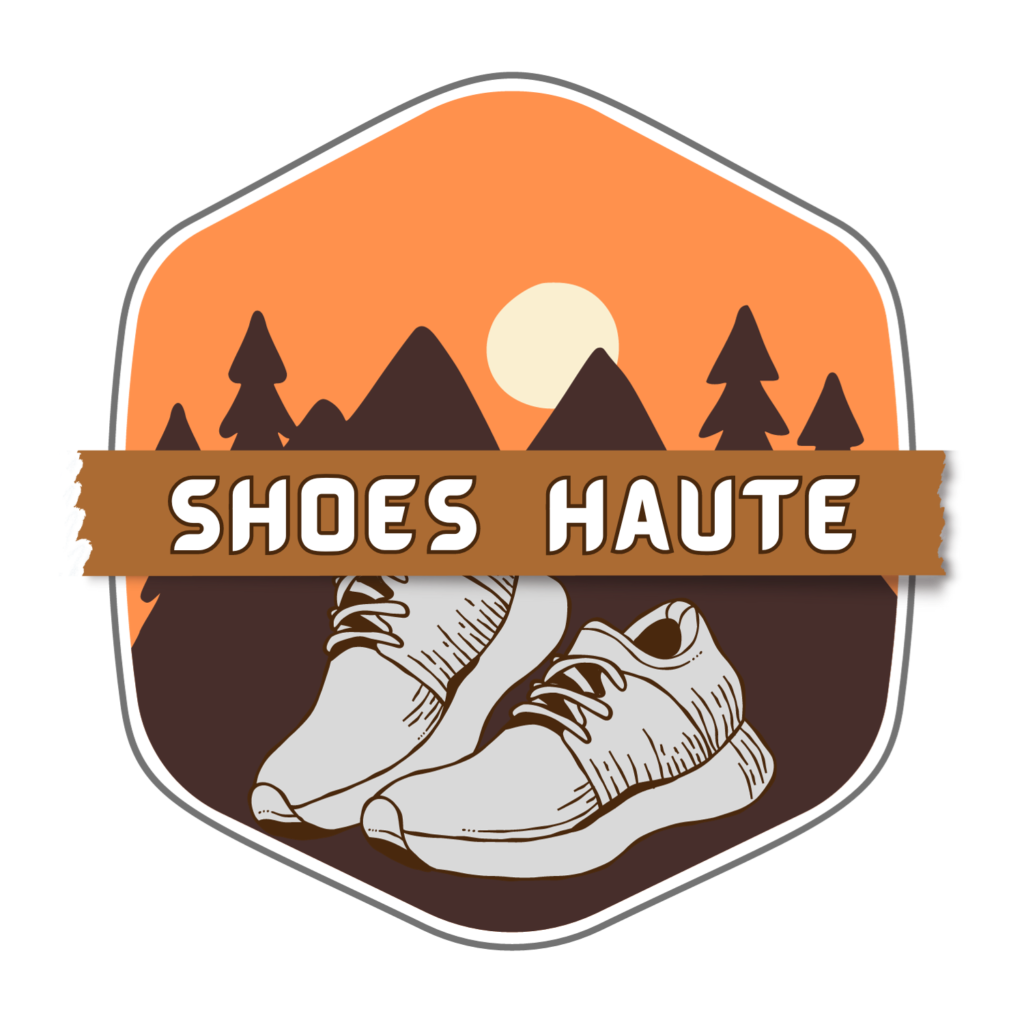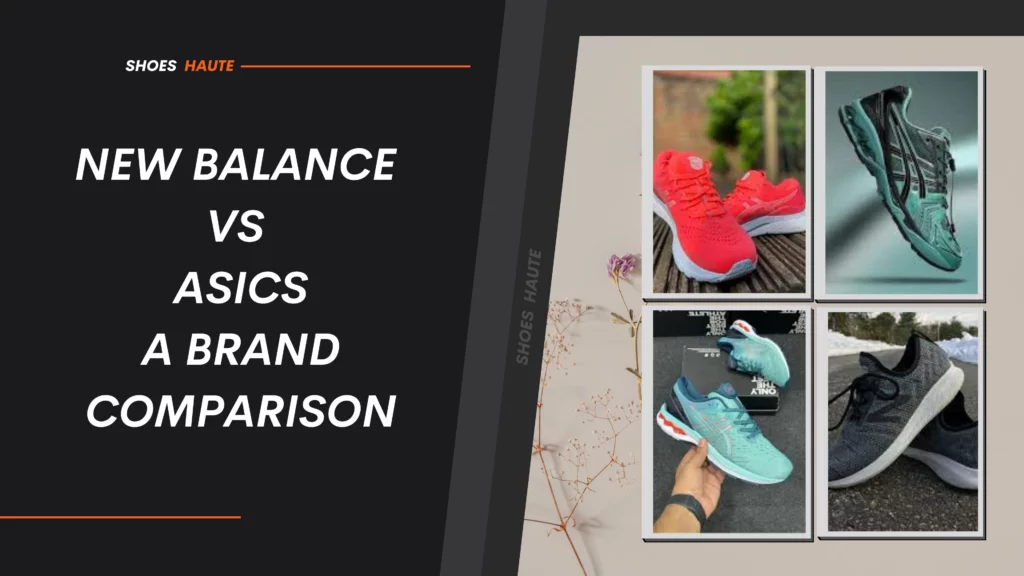
When it comes to running, choosing the right shoe can have a significant impact on performance and injury prevention. To help fellow runners make a well-informed decision, I have undertaken a comparison between two renowned brands, New Balance and ASICS.
New Balance and ASICS are respected brands that offer durable running shoes.
New Balance, founded over a century ago, is known for crafting long-wearing shoes thanks to high-quality construction. Their broad lineup caters to different runner needs, such as models designed to accommodate flat feet or high arches. meanwhile, ASICS originated in Japan and has gained recognition recently for producing cushioned and stabilizing shoes. Similar to New Balance, ASICS tailors their offerings to diverse runner requirements. Their selection additionally includes shoes targeted at specific conditions, for example plantar fasciitis or overpronation. Both companies demonstrate expertise in manufacturing shoes that provide comfort and support for runners’ varied foot strikes and injury histories.
Main Differences Between New Balance And ASICS
When considering the core attributes of New Balance and ASICS, there are several important factors to examine.
| Features | New Balance | ASICS |
|---|---|---|
| Cushioning | Offers a variety of cushioning options, including Fresh Foam | Well-known for Gel cushioning system for shock absorption |
| Support | Provides support levels, including stability characteristics | Features support features like Dynamic DuoMax technology |
| Fit | Offers a wide range of sizes and widths for different foot shapes | Provides options for different foot shapes and sizes |
| Cost | Generally more expensive than ASICS, varies based on model | Typically more affordable compared to New Balance |
| Customer Reviews | Praised for comfort, support, and durability | Comfort, support, and durability are praised, some mention breathability |
| Plantar Fasciitis | New Balance Fresh Foam 1080v11 | ASICS Gel-Kayano 27 |
| Beginners | New Balance FuelCore Coast v5 | ASICS Gel-Excite 8 |
| Overpronation | New Balance Fresh Foam 860v11 | ASICS Gel-Kayano 28 |
| Walking | New Balance 577v1 | New Balance MW411v2 |
| Wide Feet | New Balance offers a wide range of sizes, including wider options | ASICS offers shoes with wider toe boxes |
| Flat Feet | New Balance 840v4 | ASICS Gel-Venture 8 |
Cushioning:
Cushioning plays a vital role in impact protection and injury prevention.
- New Balance offers runners a range of cushioning choices, such as their Fresh Foam technology. This material delivers a soft and pleasant underfoot sensation by effectively absorbing shock across each stride. The assortment of cushioning technologies available from New Balance allows runners to select an option tailored toward their individual needs.
- In contrast, ASICS has built a strong reputation for its Gel cushioning system, which aids in shock absorption and delivers a more lively underfoot feel during runs.
Support:
Support is another important factor that can help runners avoid issues like overpronation or underpronation.
- New Balance offers shoes with differing levels of support capabilities. Their selection includes models featuring stability elements intended to accommodate overpronators. The breadth of supportive technologies from New Balance allows runners to select an option tailored to their individual pronation needs. This helps provide guided alignment to potentially reduce injury risks stemming from excessive motion
- ASICS shoes offer support features that help correct overpronation. One such technology is Dynamic DuoMax, which provides support to help realign the foot during running motions.
Fit:
Fit is another important element to consider, as ill-fitting shoes can result in blisters or other foot issues. Both New Balance and ASICS offer a wide variety of sizes and widths to suit different foot shapes, so finding a properly fitting shoe is possible.
Customer Reviews:
Through researching customer reviews and ratings, I gained more insight into each brand’s strengths and weaknesses. Both New Balance and ASICS received positive feedback for their comfort, support and durability. However, some runners commented that New Balance shoes run narrow, while others noted ASICS shoes could be less breathable than preferred. The reviews provided a balanced perspective on what aspects runners appreciated about each brand, as well as areas where improvements could be made.
For runners seeking maximum cushioning and support, who don’t mind spending a bit more, New Balance shoes may be an excellent choice. New Balance offers footwear with well-cushioned, supportive designs for those prioritizing underfoot comfort and impact protection over lower price points
ASICS can be considered a preferable choice for runners seeking a more responsive and budget-friendly running experience. However, the ultimate determination of the best shoe brand will depend on the specific requirements and preferences of each individual runner.
What factors should be considered when purchasing running shoes?
When buying running shoes, it is important to consider more than just their appearance and price tag. The American College of Sports Medicine (ACSM) suggests three essential factors to take into account when selecting the right pair of shoes.
- Firstly, weight plays a crucial role in selecting running shoes. Shoes that are too heavy can increase the risk of foot joint injuries and hinder performance for professional runners. It is generally advised to choose shoes that weigh less than 10 ounces as a guideline.
- The slope or surface angle of the shoe is another important factor to consider. Experts suggest that choosing shoes with smaller slopes can reduce stress on the muscles and joints of the foot, thereby reducing the risk of injury.
- In addition, it is important to be cautious of excessive zippers, inserts, and modulation in running shoes, as they can change the way your feet fit in the shoe and potentially lead to injuries. When it comes to running shoes, it is generally advised to opt for a simpler design.
- By considering these factors, you can choose running shoes that not only have aesthetic appeal but also provide adequate protection and support for your feet during your runs.
“The Best New Balance and ASICS Running Shoes for Plantar Fasciitis”
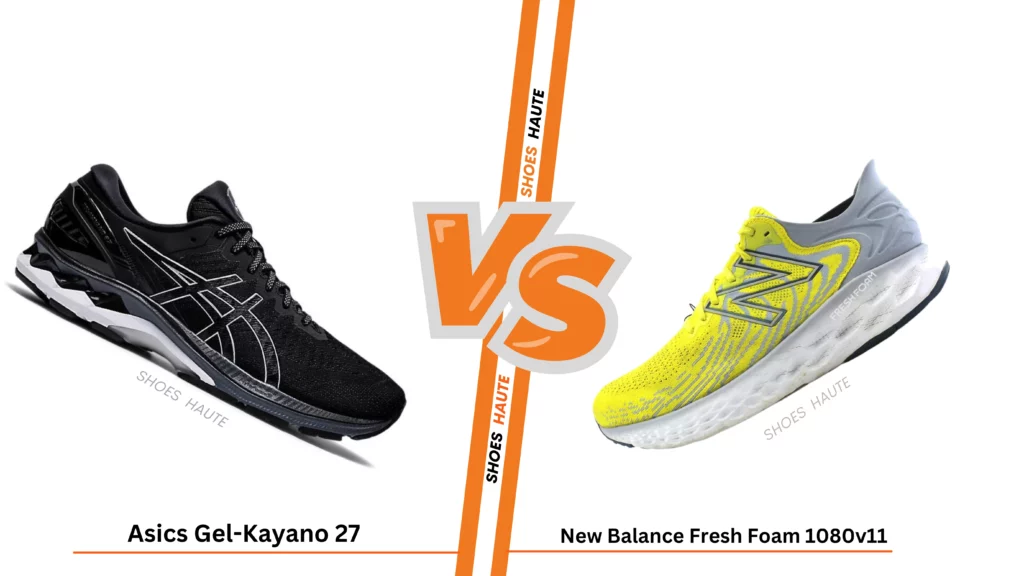
Having experienced plantar fasciitis myself, I’m all too aware of how debilitating this condition can be for runners. Plantar fasciitis involves inflammation of the band of tissue (plantar fascia) that runs along the bottom of the foot and connects the heel bone to the toes. This inflammation often results in agonizing heel and arch pain that can make even walking troublesome, let alone running. However, runners may be able to prevent or manage plantar fasciitis by choosing shoes designed to accommodate the unique biomechanical needs of their feet. Proper footwear selection goes a long way in avoiding this potentially career-threatening injury.
Runners seeking relief from plantar fasciitis have footwear options from New Balance and ASICS engineered specifically for this condition. These shoes often incorporate enhanced cushioning and arch support features aimed at reducing unnecessary strain on the plantar fascia. The extra padding and stabilized foot shaping work to alleviate pressure in high-risk areas and thus pain levels. Those experiencing heel or arch discomfort from plantar fasciitis may get symptom-managing properties by selecting shoes built for this purpose from brands like New Balance and ASICS.
- Among the many options from New Balance and ASICS, a few stand out as premier choices for runners impacted by plantar fasciitis. The New Balance Fresh Foam 1080v11 is well-regarded for its plush cushioning and structured support system. Its generous toe box also accommodates wider feet or toe issues that can exacerbate plantar pain. Another outstanding option is the ASICS Gel-Kayano 27, utilizing FlyteFoam for a lightweight cushioned ride and a dynamic DuoMax shell to reinforce stability. Both shoes effectively incorporate elements like ample padding and reinforced arches shown to alleviate plantar fasciitis symptoms for afflicted athletes.
- The New Balance Fresh Foam 1080v11 and the ASICS Gel-Kayano 27 have received positive reviews and ratings from runners who suffer from plantar fasciitis. These shoes are praised for their comfort and excellent support in addressing this condition, according to numerous customer testimonials.
- Ultimately, the ideal shoe for a runner with plantar fasciitis will depend on their specific needs and preferences. However, based on my research, I have found that the New Balance Fresh Foam 1080v11 and the ASICS Gel-Kayano 27 are both outstanding choices for individuals dealing with this condition. These shoes offer the necessary arch support and cushioning to alleviate pain and discomfort during runs.
“The Best New Balance and ASICS Running Shoes for Beginners”
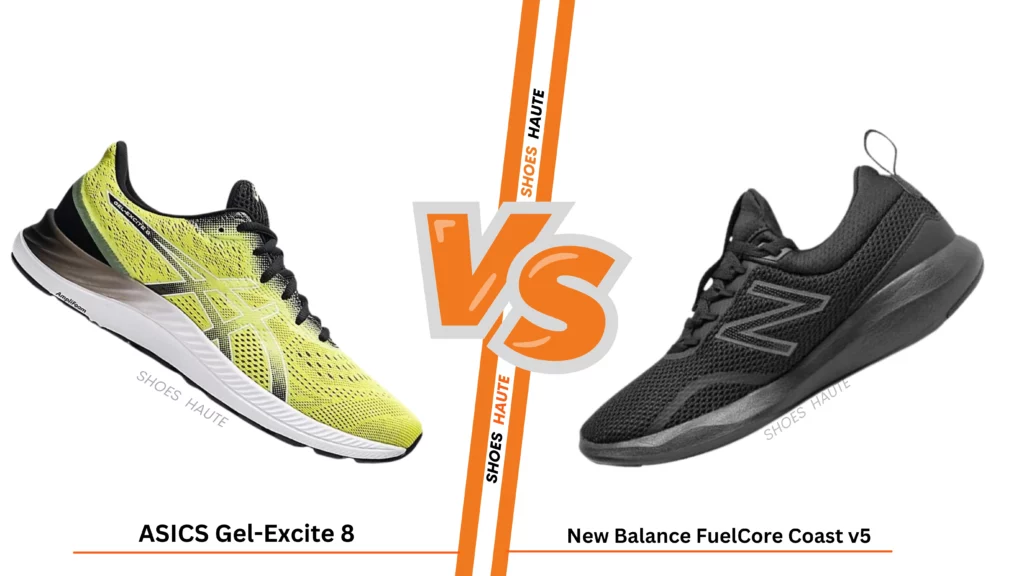
Having a passion for running and wanting to encourage others to join in, I recognize the significance of investing in quality running shoes. However, it is worth noting that a nice pair of running shoes doesn’t necessarily have to come with a hefty price tag. Well-known brands like New Balance and ASICS offer a range of affordable options to choose from.
New Balance and ASICS are renowned for their top-notch running shoes that offer a great balance of cushioning, support, and durability. However, these brands also offer more budget-friendly options that are particularly well-suited for beginners who are just starting their jogging journey.
- For individuals looking for an affordable running shoe, the New Balance FuelCore Coast v5 is a highly recommended choice. It boasts a lightweight construction, responsive cushioning, and a breathable mesh upper that promotes comfort and ventilation. Another exceptional option is the ASICS Gel-Excite 8, which incorporates Gel technology for effective shock absorption and a durable rubber outsole that provides excellent traction.
- Based on consumer reviews and ratings, both the New Balance FuelCore Coast v5 and ASICS Gel-Excite 8 are highly regarded for their combination of quality and affordability. Runners have expressed their satisfaction with the comfort and support provided by these shoes, particularly for beginners. Additionally, many customers have praised the durability and longevity of these shoes, making them a worthwhile investment.
“The Best New Balance And ASICS Running Shoes For Overpronation”
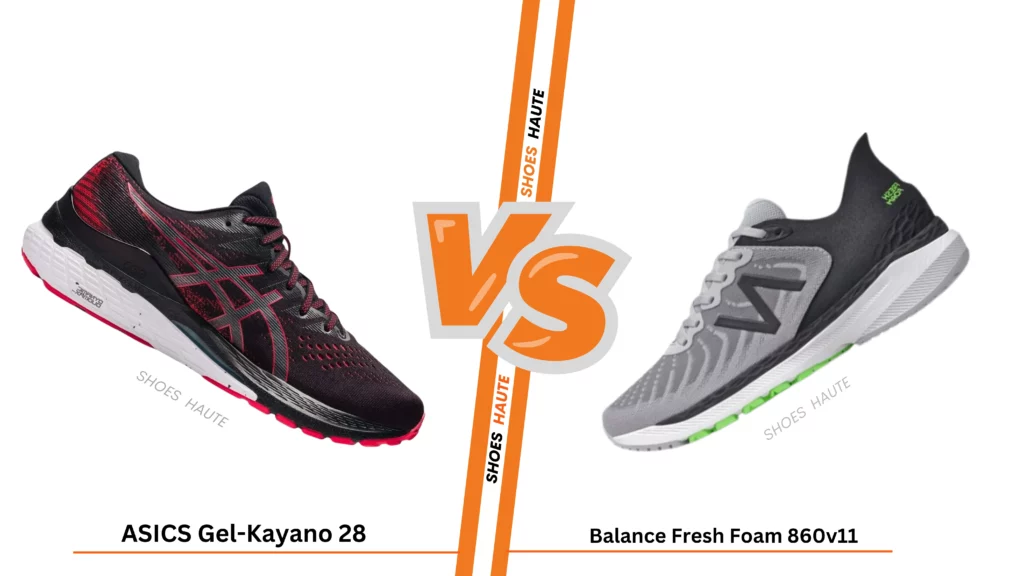
Choosing the right running shoe is crucial for runners with overpronation, as it can help prevent injuries associated with excessive inward rolling of the feet during the running gait cycle. Common issues that can arise from overpronation include shin splints, knee pain, and plantar fasciitis. Fortunately, both New Balance and ASICS offer running shoes specifically designed to provide stability and support for overpronators.
Renowned for their exceptional stability and support features, New Balance and ASICS have established themselves as top choices for overpronators. Notably, the New Balance Fresh Foam 860v11 and the ASICS Gel-Kayano 28 are highly acclaimed models in this category.
- With a perfect blend of stability and cushioning, the New Balance Fresh Foam 860v11 offers a comfortable ride coupled with corrective features to address overpronation. Boasting a breathable mesh upper for enhanced airflow and a secure fit, this shoe is equipped with a Fresh Foam midsole for an optimal experience.
- The ASICS Gel-Kayano 28 is a dream come true for overpronators seeking stability and support. ASICS’ Dynamic Duomax Support System offers a reliable foundation for the foot, while the Gel cushioning system effectively absorbs stress and minimizes impact.
- Based on user reviews and ratings, both the New Balance Fresh Foam 860v11 and the ASICS Gel-Kayano 28 have received high praise for their ability to effectively address overpronation. Runners frequently express their gratitude for the support and stability offered by these shoes, as they help alleviate pain and discomfort associated with this condition. Additionally, buyers consistently commend the exceptional comfort and durability of these shoes, making them a worthwhile investment for individuals dealing with overpronation.
- When it comes to runners who overpronate, selecting a running shoe that offers the necessary stability and support is crucial. In this regard, both the New Balance Fresh Foam 860v11 and the ASICS Gel-Kayano 28 are outstanding options.
“The Best New Balance And ASICS Shoes For Walking”
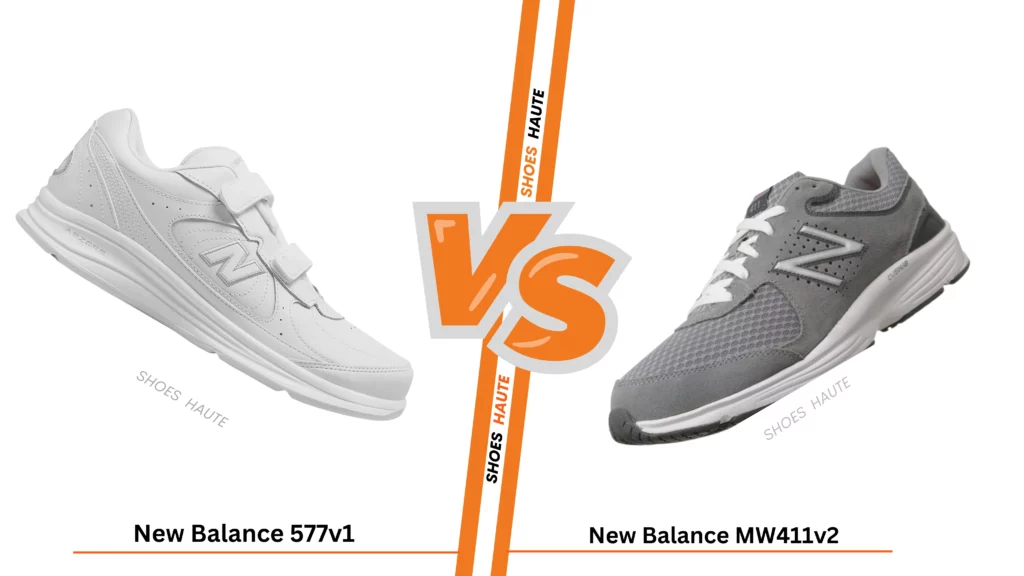
Both New Balance and ASICS produce exceptional walking shoes, but New Balance takes the lead in terms of comfort. This is attributed to the larger toe box in New Balance shoes, providing ample space for the toes to move and relax. As a result, I recommend exclusively considering New Balance shoes, especially considering their lower price point. Although both brands offer similar durability, New Balance delivers superior value as a whole.
Two of the top New Balance walking shoes are the New Balance 577v1 and the New Balance MW411v2. The 577v1 features ABZORB cushioning technology for superior shock absorption, while the MW411v2 boasts a cushioned footbed and a sturdy leather upper. Whether you’re walking or standing for extended periods, these shoes provide exceptional comfort and support.
“The Best New Balance And ASICS Shoes For Wide And Flat Feet”
For Wide Feet
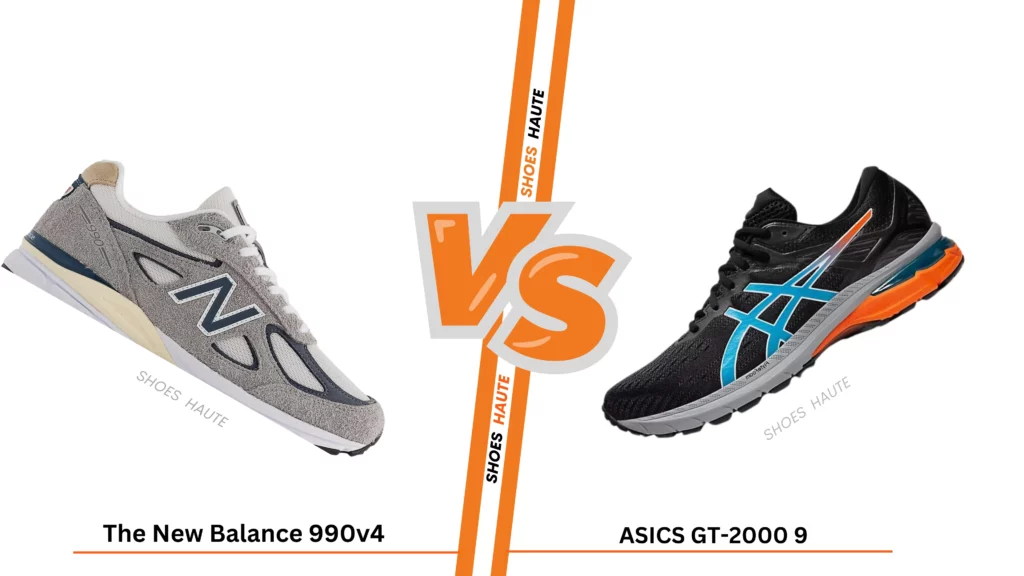
One of the reasons New Balance is highly regarded is its extensive range of sizes, including options specifically designed for individuals with wider feet. They offer shoes in various widths, such as EE (Extra Wide) and EEE (Triple Wide). The New Balance 990v4 is a well-liked choice among those with wider feet, as it provides ample cushioning, a spacious toe box, and durable construction for optimal support.
In addition to its regular shoe offerings, ASICS also caters to individuals with wider feet by offering models like the ASICS GT-2000 9. These shoes are designed with a spacious toe box and offer a comfortable fit, providing stability and support for those with wider feet.
For Flat Feet
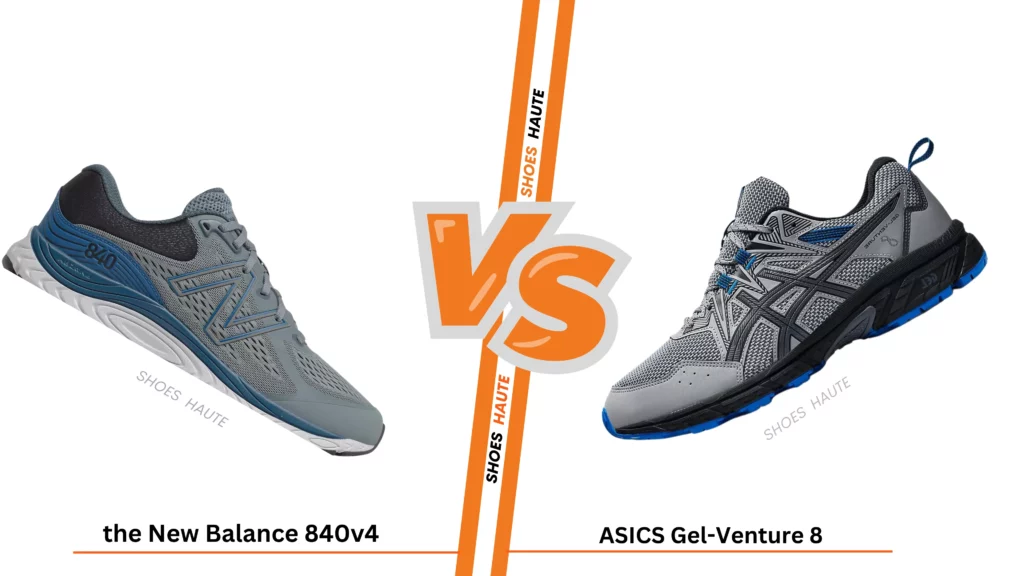
New Balance and ASICS both manufacture shoes specifically designed for individuals with flat feet, ensuring they receive adequate arch support and cushioning to alleviate discomfort and reduce potential harm.
Due to its resilient and supportive construction, the New Balance 840v4 is a favored choice among individuals with flat feet. This model features a cushioned midsole and a detachable insole, allowing for personalized support and ensuring durability.
ASICS also offers shoes designed for individuals with flat feet, such as the ASICS Gel-Venture 8. This model stands out for its exceptional arch support and cushioning, as well as its sturdy and supportive construction that promotes a natural foot movement.
When choosing between New Balance and ASICS for wide or flat feet, personal style and fit become crucial factors. Both brands offer top-notch footwear with specialized features for specific foot types. It is recommended to try on various models to determine the shoe that provides the utmost comfort and support, tailored to your individual requirements.
Pros & Cons: New Balance Vs ASICS
New Balance
Pros
- Versatile Shoe Selection
- Excellent Cushioning
- Wide Width Options
- Durability and Longevity
- Innovative Technologies
- Strong Arch Support
- Good Traction
Cons
- Relatively Higher Price
ASICS
Pros
- Superior Shock Absorption
- Enhanced Stability
- Lightweight Design
- Exceptional Breathability
- Wide Range of Styles and Colors
- Pronation Control
- Great for Long-Distance Running
Cons
- Limited Width Options
Conclusion
Making the right choice in running shoes is crucial to enhance performance and minimize the risk of injuries. When selecting a pair, it is important to consider factors such as cushioning, support, fit, price, and durability. These aspects play a significant role in ensuring optimal running experience and long-term protection.
New Balance and ASICS offer a wide range of running shoes to cater to different foot types and preferences. New Balance excels in providing options for individuals with wider feet, particularly in the realm of walking shoes. On the other hand, ASICS specializes in stability running shoes, making them a great choice for those with flat feet.
Ultimately, the best running shoes are determined by their proper fit, sufficient support and cushioning, as well as long-lasting comfort even during extended wear.
Frequently Asked Questions
How frequently should I change my running shoes?
Running shoes should be replaced every 300-500 miles or every 6-8 months, whichever comes first. This is due to the fact that the cushioning and support in the shoes degrade over time and lose their effectiveness, which can lead to injuries.
What is the difference between neutral and stable running shoes?
Neutral running shoes are intended for runners with a normal foot arch who do not require additional support for overpronation or under pronation. Stable running shoes, on the other hand, are intended for runners who overpronate and require additional support to keep their feet from sliding inward too far.
How can I determine whether I have flat feet?
Flat feet are distinguished by a low or non-existent arch in the foot. When standing up, look at the bottom of your feet to see if you have flat feet. If your arches are low or nonexistent, you probably have flat feet. A podiatrist or doctor should also be consulted for a correct diagnosis.
Are high-priced running shoes worthwhile?
It is dependent on your personal demands and tastes. While more expensive running shoes may have better technology and materials, they are not always necessary for all runners. It’s important to pick a pair of shoes that fit properly and provide adequate support and cushioning.
Can I wear running shoes for other activities such as walking or hiking?
Running shoes can be worn for other activities such as walking or hiking, but keep in mind that they are specifically intended for running and may not give the same level of support or traction required for other activities. It is essential that you use shoes that are specifically built for the activity you are performing.
How can I tell whether a running shoe fits correctly?
A running shoe should be snug but not excessively tight or uncomfortable to wear. Check that the toe box has adequate area for your toes to wiggle and that your heel is securely in place without slipping. It’s also a good idea to try on shoes later in the day when your feet have expanded slightly from walking.





